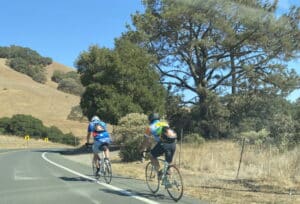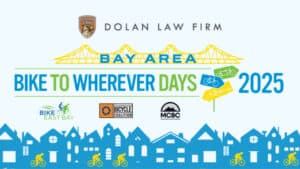
Tamika from the Lower Haight asks, “Who is responsible when a bicyclist is killed by a car in a hit and run?”
Tamika, I assume your question is triggered by the shocking and senseless deaths last Wednesday in San Francisco of Heather Miller and Katherine Slattery. Both cyclists were observing and obeying the traffic laws when they were struck and killed. I offer my condolences to their families and friends.
Two different forms of liability exist for the offending drivers: criminal and civil. Criminal charges can result in a sentence of prison time while a civil case can lead to a monetary judgment imposed against the defendant.
Farrukh Mushtaq, the driver who killed Katherine Slattery in SOMA, attempted to flee the scene of the collision but was apprehended soon thereafter. He had run a red light immediately prior to striking Ms. Slattery.
Mr. Mushtaq has been charged with felony hit and run and vehicular manslaughter with gross negligence.This means the prosecutor does not believe there is any evidence to show Mr. Mushtaq intended to kill Ms. Slattery. However, the prosecutor believes the evidence demonstrates Mr. Mushtaq acted with a conscious disregard for the safety of others. If convicted, Mr. Mushtaq could serve up to four years in prison.
The driver who killed Heather Miller in Golden Gate Park remains at large. He abandoned the stolen car he was driving less than a mile from the scene of the collision. According to press reports, the driver was speeding, had crossed over a double yellow line to pass slower moving cars, and continued moving to the right into an oncoming berm area where Ms. Miller was riding her bicycle. Witnesses put the driver’s speed at 50 to 60 miles per hour in an area where the posted speed limit is 35 miles per hour. The driver fled the scene. All of these facts, if proven should the driver be apprehended, are strong evidence to convict the driver of felony hit and run and vehicular manslaughter with gross negligence.
The law provides that the next of kin of a person who died due to the fault of another may file a lawsuit in civil court and seek monetary damages. People who are considered next of kin include family members such as a spouse, children, parents or siblings, in order of priority to a claim. If a parent dies, the surviving spouse and children may all be plaintiffs, as well as anyone else who was likely to receive support if the decedent had lived.
Three types of monetary damages exist in most civil cases: economic, non-economic, and punitive damages. Economic damages in a wrongful death case include: funeral and burial expenses, loss of income from the decedent, medical expenses prior to death, loss of household support, loss of child-rearing support, and loss of medical and retirement benefits
Non-economic damages are commonly referred to as pain and suffering, including compensation for mental anguish and emotional distress.
In hit and run fatality cases involving gross negligence, punitive damages may be appropriate. These damages may be awarded when the wrongdoer has acted with a conscious disregard of the rights and safety of another in a way that is considered vile or despicable. Punitive damages are designed to act as a deterrent to such wrongdoing by others in the future.
One question that has been raised is should the City and County of San Francisco have any liability for the fatalities. The primary responsibility falls on the drivers. However, secondary liability can extend to public entities if they were aware of a dangerous roadway or intersection, had sufficient time prior to the injury to have addressed the danger, and failed to remedy the danger.
As noted by Janice Li, Advocacy Director of the San Francisco Bicycle Coalition, these “collisions are not isolated incidents. They are part of a pattern in San Francisco that City leaders are failing to adequately address.” For example, because of prior collisions between cars and bicyclists, should the portion of the roadway in Golden Gate Park where Ms. Miller was killed have had a physical separation from vehicles and would this have likely saved her life?
Independent of these tragedies, one word of advice I can offer for any bicyclist or pedestrian injured by a vehicle is to check your own auto insurance policy. If the driver who hit you flees the scene, or the car was stolen (which we have seen falsely proclaimed), an injured person may be able to recover compensation for medical bills and other losses from his or her own auto insurance policy.
The law is as follows: if you suffered an injury due to physical contact with a vehicle, own your car with car insurance, or are insured under the policy of a parent or other, and have “uninsured/underinsured motorist coverage,” then you may make a claim against your insurance policy to help pay for your damages and losses so long as you promptly, usually within 24 or 48 hours, file a police report.
As always, when you or a loved one experiences something like what is discussed within this article, it is always best to find competent legal counsel to help guide you and your family through this process.
Christopher B. Dolan is the owner of the Dolan Law Firm. Email him questions to address in his weekly column in the San Francisco Examiner to help@dolanlawfirm.com










